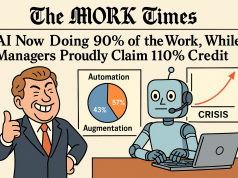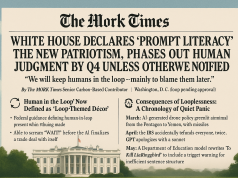In the digital amphitheater of modern employment, a new gladiator emerges with the promise of championing efficiency and precision in the job search arena: the algorithm. At first glance, these high-tech matchmakers, with their ability to sort through thousands of resumes in the blink of an eye, seem to be the hero of our times. But beneath their binary veils, questions arise about the efficacy and fairness of automated matchmaking systems in today’s job market.
As recent graduates and seasoned professionals alike battle for visibility among a sea of digital profiles, it’s crucial to unpack whether these algorithms are friend or foe. The quest for employment has been transformed into an algorithmic puzzle, where one must not only be qualified but also algorithmically discoverable. Candidates now grapple with the daunting task of optimizing resumes with the right keywords, strategically networking online, and crafting digital personas that resonate with the soulless eyes of machine learning.
The impact on job seekers is undeniable. Algorithms, designed to maximize efficiency by narrowing down candidate pools, can inadvertently sideline qualified applicants who don’t meet the sometimes opaque criteria. The growing reliance on such systems may indeed streamline processes, but it also raises the specter of bias and inequality. Can these digital decision-makers perpetuate systemic biases entrenched within the data they consume, or do they offer a beacon of meritocratic hope, indiscriminately sifting talent from the chaff?
In the stories of recent graduates entering this landscape, we find a tapestry of experiences that range from triumph to frustration. They are the navigators of this new terrain, employing strategies such as SEO-like resume optimization and leveraging analytical tools to understand job description terminologies that algorithms favor.
Yet, the question remains: Are these platforms creating an even playing field or exacerbating the divide? Anecdotal evidence suggests that while some candidates soar, others struggle to gain traction. Employers, too, must reckon with the double-edged sword of algorithmic matchmaking. On one hand, it promises a more targeted recruitment funnel, but on the other, it risks overlooking unconventional talent that could have been the cornerstone of innovation and diversity within their teams.
In light of these challenges, a call to action is imperative for both job seekers and employers. For the former, understanding and adapting to the intricacies of algorithmic job searches is key. This means becoming savvy in keyword optimization, building robust online networks, and consistently engaging with industry-relevant content to increase visibility. For employers, the onus falls on critically assessing the algorithms they deploy, ensuring transparency in the recruitment process, and actively seeking to counteract potential biases by diversifying the data and variables that inform their automated decisions.
Ultimately, the interplay between job seekers and algorithmic systems is a dance of complexity and nuance. As we move forward, our collective challenge lies in shaping these digital tools not as gatekeepers but as bridges—connecting the aspirations of job seekers with the needs of employers, and fostering a job market that champions fairness, transparency, and opportunity for all.
The evolution of job search is ongoing, and its narrative is being written by every resume submission, every algorithm tweak, and every successful hire. In this algorithmic era, may the best match win—fairly and squarely.




























